#Green Infrastructure
Explore tagged Tumblr posts
Text
As relentless rains pounded LA, the city’s “sponge” infrastructure helped gather 8.6 billion gallons of water—enough to sustain over 100,000 households for a year.
Earlier this month, the future fell on Los Angeles. A long band of moisture in the sky, known as an atmospheric river, dumped 9 inches of rain on the city over three days—over half of what the city typically gets in a year. It’s the kind of extreme rainfall that’ll get ever more extreme as the planet warms.
The city’s water managers, though, were ready and waiting. Like other urban areas around the world, in recent years LA has been transforming into a “sponge city,” replacing impermeable surfaces, like concrete, with permeable ones, like dirt and plants. It has also built out “spreading grounds,” where water accumulates and soaks into the earth.
With traditional dams and all that newfangled spongy infrastructure, between February 4 and 7 the metropolis captured 8.6 billion gallons of stormwater, enough to provide water to 106,000 households for a year. For the rainy season in total, LA has accumulated 14.7 billion gallons.
Long reliant on snowmelt and river water piped in from afar, LA is on a quest to produce as much water as it can locally. “There's going to be a lot more rain and a lot less snow, which is going to alter the way we capture snowmelt and the aqueduct water,” says Art Castro, manager of watershed management at the Los Angeles Department of Water and Power. “Dams and spreading grounds are the workhorses of local stormwater capture for either flood protection or water supply.”
Centuries of urban-planning dogma dictates using gutters, sewers, and other infrastructure to funnel rainwater out of a metropolis as quickly as possible to prevent flooding. Given the increasingly catastrophic urban flooding seen around the world, though, that clearly isn’t working anymore, so now planners are finding clever ways to capture stormwater, treating it as an asset instead of a liability. “The problem of urban hydrology is caused by a thousand small cuts,” says Michael Kiparsky, director of the Wheeler Water Institute at UC Berkeley. “No one driveway or roof in and of itself causes massive alteration of the hydrologic cycle. But combine millions of them in one area and it does. Maybe we can solve that problem with a thousand Band-Aids.”
Or in this case, sponges. The trick to making a city more absorbent is to add more gardens and other green spaces that allow water to percolate into underlying aquifers—porous subterranean materials that can hold water—which a city can then draw from in times of need. Engineers are also greening up medians and roadside areas to soak up the water that’d normally rush off streets, into sewers, and eventually out to sea...
To exploit all that free water falling from the sky, the LADWP has carved out big patches of brown in the concrete jungle. Stormwater is piped into these spreading grounds and accumulates in dirt basins. That allows it to slowly soak into the underlying aquifer, which acts as a sort of natural underground tank that can hold 28 billion gallons of water.
During a storm, the city is also gathering water in dams, some of which it diverts into the spreading grounds. “After the storm comes by, and it's a bright sunny day, you’ll still see water being released into a channel and diverted into the spreading grounds,” says Castro. That way, water moves from a reservoir where it’s exposed to sunlight and evaporation, into an aquifer where it’s banked safely underground.
On a smaller scale, LADWP has been experimenting with turning parks into mini spreading grounds, diverting stormwater there to soak into subterranean cisterns or chambers. It’s also deploying green spaces along roadways, which have the additional benefit of mitigating flooding in a neighborhood: The less concrete and the more dirt and plants, the more the built environment can soak up stormwater like the actual environment naturally does.
As an added benefit, deploying more of these green spaces, along with urban gardens, improves the mental health of residents. Plants here also “sweat,” cooling the area and beating back the urban heat island effect—the tendency for concrete to absorb solar energy and slowly release it at night. By reducing summer temperatures, you improve the physical health of residents. “The more trees, the more shade, the less heat island effect,” says Castro. “Sometimes when it’s 90 degrees in the middle of summer, it could get up to 110 underneath a bus stop.”
LA’s far from alone in going spongy. Pittsburgh is also deploying more rain gardens, and where they absolutely must have a hard surface—sidewalks, parking lots, etc.—they’re using special concrete bricks that allow water to seep through. And a growing number of municipalities are scrutinizing properties and charging owners fees if they have excessive impermeable surfaces like pavement, thus incentivizing the switch to permeable surfaces like plots of native plants or urban gardens for producing more food locally.
So the old way of stormwater management isn’t just increasingly dangerous and ineffective as the planet warms and storms get more intense—it stands in the way of a more beautiful, less sweltering, more sustainable urban landscape. LA, of all places, is showing the world there’s a better way.
-via Wired, February 19, 2024
#california#los angeles#water#rainfall#extreme weather#rain#atmospheric science#meteorology#infrastructure#green infrastructure#climate change#climate action#climate resilient#climate emergency#urban#urban landscape#flooding#flood warning#natural disasters#environmental news#climate news#good news#hope#solarpunk#hopepunk#ecopunk#sustainability#urban planning#city planning#urbanism
14K notes
·
View notes
Text
Dandelion News - January 15-21
Like these weekly compilations? Tip me at $kaybarr1735 or check out my Dandelion Doodles!
1. Landmark debt swap to protect Indonesia’s coral reefs

“The government of Indonesia announced this week a deal to redirect more than US$ 35 million it owes to the United States into the conservation of coral reefs in the most biodiverse ocean area on Earth.”
2. [FWS] Provides Over $1.3 Billion to Support Fish and Wildlife Conservation and Outdoor Access

“Through these combined funds, agencies have supported monitoring and management of over 500 species of wild mammals and birds, annual stocking of over 1 billion fish, operations of fish and wildlife disease laboratories around the country, and provided hunter and aquatic education to millions of students.”
3. Philippine Indigenous communities restore a mountain forest to prevent urban flooding

“Indigenous knowledge systems and practices are considered in the project design, and its leaders and members have been involved throughout the process, from agreeing to participate to identifying suitable land and selecting plant species that naturally grow in the area.”
4. Responsible Offshore Wind Development is a Clear Win for Birds, the U.S. Economy, and our Climate

“[T]he total feasible offshore wind capacity along U.S. coasts is more than three times the total electricity generated nationwide in 2023. […] Proven strategies, such as reducing visible lights on turbines and using perching deterrents on turbines, have been effective in addressing bird impacts.”
5. Illinois awards $100M for electric truck charging corridor, Tesla to get $40M

“The project will facilitate the construction of 345 electric truck charging ports and pull-through truck charging stalls across 14 sites throughout Illinois[…. E]lectrifying [the 30,000 daily long-haul] trucks would make a huge impact in the public health and quality of life along the heavily populated roadways.”
6. Reinventing the South Florida seawall to help marine life, buffer rising seas
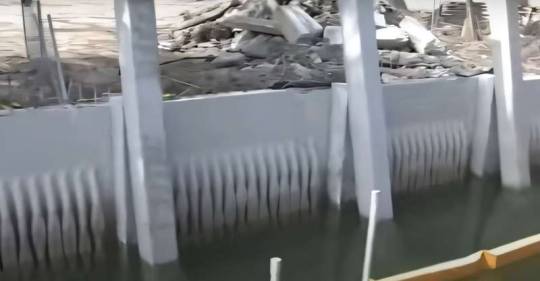
“[The new seawall] features raised areas inspired by mangrove roots that are intended to both provide nooks and crannies for fish and crabs and other marine creatures and also better absorb some of the impact from waves and storm surges.”
7. Long Beach Commits to 100% All-Electric Garbage Trucks
“[Diesel garbage trucks] produce around a quarter of all diesel pollution in California and contribute to 1,400 premature deaths every year. Electric options, on the other hand, are quieter than their diesel counterparts and produce zero tailpipe emissions.”
8. ‘This Is a Victory': Biden Affirms ERA Has Been 'Ratified' and Law of the Land

“President Joe Biden on Friday announced his administration's official opinion that the amendment is ratified and its protections against sex-based discrimination are enshrined in the U.S. Constitution.”
9. A Little-Known Clean Energy Solution Could Soon Reach ‘Liftoff’

“Ground source heat pumps could heat and cool the equivalent of 7 million homes by 2035—up from just over 1 million today[…. G]eothermal energy is generally considered to be more popular among Republicans than other forms of clean energy, such as wind and solar.”
10. Researchers combine citizens' help and cutting-edge tech to track biodiversity
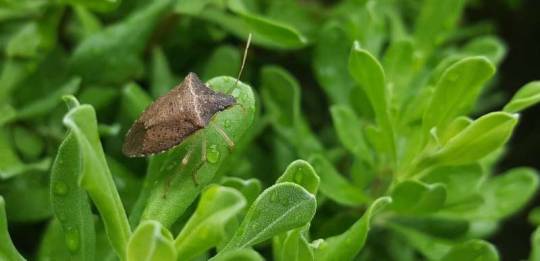
“Researchers in the project, which runs from 2022 to 2026, are experimenting with tools like drones, cameras and sensors to collect detailed data on different species, [… and] Observation.org, a global biodiversity platform where people submit pictures of animals and plants, helping to identify and monitor them.”
January 8-14 news here | (all credit for images and written material can be found at the source linked; I don’t claim credit for anything but curating.)
#good news#hopepunk#nature#national debt#coral reef#conservation#funding#fish and wildlife#philippines#indigenous#agroforestry#green infrastructure#offshore wind#wind energy#electric vehicles#illinois#florida#sea wall#habitat#california#equal rights#human rights#us politics#geothermal#biodiversity#citizen science#climate change#invasive species#endangered species#clean energy
274 notes
·
View notes
Text





115 notes
·
View notes
Text
What is Green Infrastructure?
Runoff from stormwater continues to be a major cause of water pollution in urban areas. It carries trash, bacteria, heavy metals, and other pollutants through storm sewers into local waterways. Heavy rainstorms can cause flooding that damages property and infrastructure.
Historically, communities have used gray infrastructure—systems of gutters, pipes, and tunnels—to move stormwater away from where we live to treatment plants or straight to local water bodies. The gray infrastructure in many areas is aging, and its existing capacity to manage large volumes of stormwater is decreasing in areas across the country. To meet this challenge, many communities are installing green infrastructure systems to bolster their capacity to manage stormwater. By doing so, communities are becoming more resilient and achieving environmental, social and economic benefits.

Basically, green infrastructure filters and absorbs stormwater where it falls. In 2019, Congress enacted the Water Infrastructure Improvement Act, which defines green infrastructure as "the range of measures that use plant or soil systems, permeable pavement or other permeable surfaces or substrates, stormwater harvest and reuse, or landscaping to store, infiltrate, or evapotranspirate stormwater and reduce flows to sewer systems or to surface waters."

Green infrastructure elements can be woven into a community at several scales. Examples at the urban scale could include a rain barrel up against a house, a row of trees along a major city street, or greening an alleyway. Neighborhood scale green infrastructure could include acres of open park space outside a city center, planting rain gardens or constructing a wetland near a residential housing complex. At the landscape or watershed scale, examples could include protecting large open natural spaces, riparian areas, wetlands or greening steep hillsides. When green infrastructure systems are installed throughout a community, city or across a regional watershed, they can provide cleaner air and water as well as significant value for the community with flood protection, diverse habitat, and beautiful green spaces.
49 notes
·
View notes
Text
e360: You’ve been quoted as saying: “There’s no more natural nature. Now it’s a matter of design.” What did you mean by that? Orff: We humans are profoundly impacting the planet. There is no “pure nature” that’s outside of us, untouched up there in the foothills somewhere. We’ve “made” the world what it is already, so now we need to take a very, very strong hand in the remaking. It is a matter of design in the sense that it requires work, intention, design, funding, political skills. It’s not a naive or nostalgic attempt to restore the past. Instead, it’s layering up natural systems to reduce risk, building this hybrid future of stewarded nature. e360: In Staten Island you are building a breakwater offshore, but in other places you have advocated tearing down some built structures to allow water a place to go during floods. Orff: We have to soften our shorelines, we need to remove roadways from critical migration paths. Otherwise, flash flooding will get worse, and our biodiversity will continue to plummet. So a big part of climate adaptation may simply be unbuilding what we’ve already built. Rather than thinking of design as something merely additive or “beautifying,” we need to think about undoing our environmental mistakes, like damming rivers, bulkheading our shorelines, and concretizing streams. We need to start making room for rivers and floods. e360: We’ve tried to control nature with big infrastructure projects. But that can backfire, can’t it? Orff: For decades, infrastructure has been constructed as “single-purpose,” often designed by engineers to isolate one element of a system and to solve one problem. For example, on Staten Island, during Superstorm Sandy, a levee designed to keep water out was overtopped, resulting in a “bathtub effect” that trapped water inside a neighborhood rather than keeping it out and resulted in several deaths. We try to lock natural systems in place. But, of course, that is not the way that natural systems respond, and it is wholly insufficient for a climate-changed environment where we’re experiencing more intense rain in many regions, where we are facing more extreme heat, where sea levels are rising. The old rules, frankly, no longer apply.
137 notes
·
View notes
Text
Minor detail from Illustrhater with absolutely no relevance to the plot, but I adore:
The rooftops now have solar panels and small garden panels.
The s5 finale talked about Ms. Bustier's environmental commitment to as mayor of Paris, but I expected to feature as the occasional environmental advocacy episode like in the past (I'm going to make another post about those). But working this into the background, especially of a setting that is both important and rather unique to the show (rooftops)? I love it. Deliberately showing what a green city could look like and normalizing it? Amazing.
The best part? Rooftop plantings are a real tool used by city planners with the following benefits:
Reduce stormwater pollution
Increase pollinator habitat + connectivity
Decrease urban temperature
Increase mental health
Increase albedo (sunlight reflectivity, which can play into the greenhouse effect)
As an environmental planning major, I could talk about the importance of each of the points quite a bit. This sort of thing is my passion, and I'm delighted to see that my hyperfixation show includes it.
#when hyperfocus meets special interest#mlb s6#miraculous lb#green infrastructure#environmental planning#urban planning#ml illustrhater
7 notes
·
View notes
Text
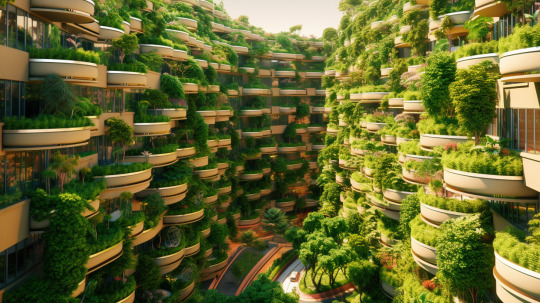
#sustainable living#ecofriendly#environmental concept art#green city#green infrastructure#sustainability#utopia#green living#architecture#nature#naturecore#digital art#EcoApartment
64 notes
·
View notes
Text

2 notes
·
View notes
Photo

Landscape - Modern Landscape Photo of a mid-sized modern full sun rooftop mulch landscaping.
2 notes
·
View notes
Text
Turin; Italy.
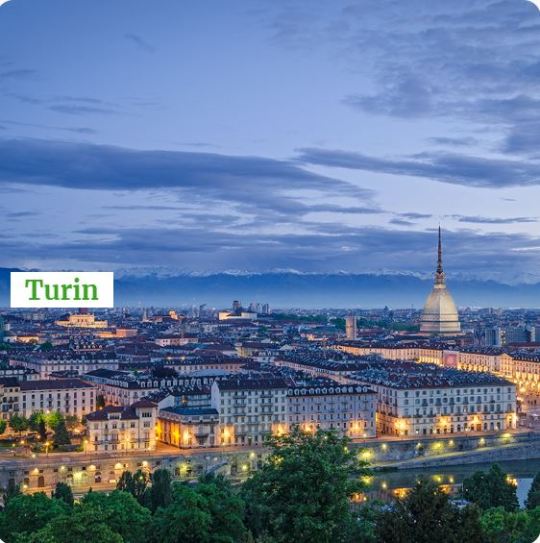
The city of Turin is located in the region of Piedmont in the northwest of Italy and is home to 880,000 people. To overcome social, economic and environmental challenges, Turin initiated a transformation to become more sustainable and liveable. This is reflected in the current “2030 Action Plan for a Sustainable and Resilient Turin” which aligns with the city’s participation in the “Trees in Cities Challenge”. The pledge to plant 1,000 trees is implemented along with the development of a “Sustainable Urban Forest Management Plan” - one of the first plans of that kind in Italy – and the creation of a “Strategic Green Infrastructure Plan” to guide the management of, and investment in, green infrastructure. Together with a corporate sponsor, Turin planted 3,000 trees and overall 18,000 trees, considerably exceeding its pledge of 15,000.
#trees#towns#turin#italy#trees in cities#urban trees#tree planting pledges#urban forestry#green infrastructure#urban october
2 notes
·
View notes
Text
Infrastructure Resilience – safeguarding gains in sustainable development (HLPF 2023 Side Event.
This side event will discuss opportunities and strategies to enhance investments in quality, reliable, sustainable and resilient infrastructure, including regional and transborder infrastructure in the context of the most vulnerable countries such as the LDCs, LLDCs and SIDS.
It will contextualize the current state of play in increasing the resilience of hard, soft and natural infrastructure across different infrastructure systems, including water and transportation. Good practices related to gray and green/blue infrastructure, including nature-based solutions, will be presented. Panellists will also discuss next steps to implement the infrastructure-related calls for action in the GA Resolutions 77/282 and 77/289.
This event is being organized by the United Nations Office for Disaster Risk Reduction and is co-sponsored by the Co-Chairs of the Group of Friends of Disaster Risk Reduction (Permanent Missions of Australia, Indonesia, Norway and Peru), as well as the Permanent Mission of India, the Permanent Mission of Poland and the Coalition for Disaster Resilient Infrastructure.
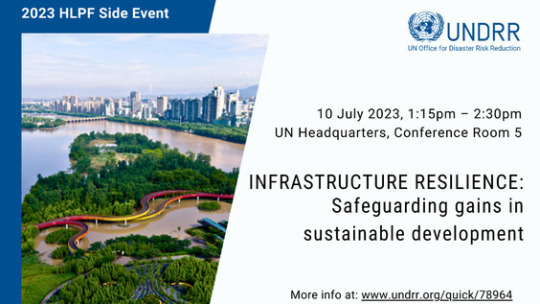
#Gray Infrastructure#green infrastructure#Blue Infrastructure#Sustainable Development#disaster risk reduction#HLPF23#sdg11#infrastructure#natural disasters#natural hazards
2 notes
·
View notes
Text
Dandelion News - January 22-28
Like these weekly compilations? Tip me at $kaybarr1735 or check out my Dandelion Doodles!
1. Sunfish that got sick after aquarium closed has recovered — thanks to human cutouts

“A solitary sunfish […] appeared unwell days after the facility closed last month for renovations. As a last-ditch measure to save the popular fish, its keepers hung their uniforms and set up human cutouts outside the tank. The next morning, the sunfish ate for the first time in about a week and has been steadily recovering[….]”
2. Costco stands by DEI policies, accuses conservative lobbyists of 'broader agenda'

“[Each of the board of directors and 98% of shareholders voted to reject a measure against DEI.] Costco's board wrote that “our commitment to an enterprise rooted in respect and inclusion is appropriate and necessary[….]””
3. Nearly $37 Million Will Support Habitat Restoration in Coastal Louisiana

“The project will restore nearly 380 acres of marsh and construct more than 7,000 feet of terraces in St. Bernard Parish. […] Coastal wetlands help protect communities [… from] wind, waves, and flooding[… and] support a statewide seafood industry valued at nearly $1 billion per year.”
4. Cooling green roofs seemed like an impossible dream for Brazil's favelas. Not true!

“[… A Brazilian nonprofit] teaches favela residents how to build their own green roofs as a way to beat the heat without overloading electrical grids[…,] dampen noise pollution, improve building energy efficiency, prevent flooding by reducing storm water runoff and ease anxiety.”
5. Bacteria found to eat forever chemicals -- and even some of their toxic byproducts
“"Many previous studies have only reported the degradation of PFAS, but not the formation of metabolites. We not only accounted for PFAS byproducts but found some of them continued to be further degraded by the bacteria," says the study's first author[….]”
6. A father and daughter’s to turn oil data into life-saving water

“The aquifer [discovered through oil-owned seismic data], it turned out, was vast enough to provide water for 2 million people for more than a century.”
7. Trump’s funding pause won’t impact federal student loans, Pell Grants
“[… T]he temporary pause will not impact “assistance received directly by individuals,” including federal direct student loans and Pell Grants, which are government subsidies that help low-income students pay for college.”
8. In Uganda, a women-led reforestation initiative fights flooding, erosion

“[… T]he Kasese municipality has established nurseries to provide free tree seedlings, particularly to women, to support reforestation efforts. [… They] plant Ficus trees near their homesteads to provide shade and help control erosion, and Dracaena trees on their fields to retain soil moisture.”
9. [A Texas school board] votes yes to provide low-cost housing to staff at no cost to the district

“The program will include 300 homes[…] only a short commute to campuses. […] Rent will be determined on a sliding scale based on their salaries, with those making less receiving a larger discount. The proposed community would include amenities, like childcare facilities[….]”
10. Heat pumps keep widening their lead on gas furnaces

“Americans bought 37% more air-source heat pumps than the next-most-popular heating appliance, gas furnaces, during the first 11 months of the year. That smashes 2023’s record-setting lead of 21%.”
January 15-21 news here | (all credit for images and written material can be found at the source linked; I don’t claim credit for anything but curating.)
#hopepunk#good news#fish#sunfish#mola mola#aquarium#us politics#costco#dei#diversity equity and inclusion#louisiana#habitat restoration#green infrastructure#brazil#global warming#science#forever chemicals#recycling#water#water scarcity#big oil#student loans#federal aid#reforestation#gardening#low income#affordable housing#housing#school#heat pump installation
134 notes
·
View notes
Text

14 notes
·
View notes
Link
Sustainable road construction has a direct impact on the environment and contributes to global carbon footprints. It is possible to build infrastructure more sustainably and environmentally friendly by using these materials and techniques.
The construction of more sustainable roads involves many factors, from reducing the amount of carbon dioxide that is released to the atmosphere, reducing waste during construction, and incorporating more recycled material, to extending the cycle of pavement life and reducing the need for future maintenance.
Recycled Materials
When building roads, recycled materials like crushed concrete, asphalt, and glass cut down on waste and the need for new materials. The creation of new materials produces more greenhouse gas emissions than recycled materials do.
Permeable Pavement
A type of pavement known as permeable pavement allows water to permeate it, minimizing storm-water runoff and enhancing water quality. This kind of pavement, which is often built of porous concrete or asphalt, might help lessen the urban heat island effect.
Biogenic Asphalt Technology
In the form of a road, biological asphalt binder technology effectively locks away carbon captured during the growth of biomass or plant based materials.
Approximately 6 tons of carbon dioxide equivalents can be captured and stored per kilometer of road. Most of this carbon will not reenter the atmosphere since asphalt can be recycled at the end of the pavement's life. This assists our customers in achieving net zero.
Green Infrastructure
Additionally, incorporating green infrastructure such as bioswales and rain gardens can improve the quality of the water by reducing storm-water runoff. To absorb and treat stormwater before it enters rivers, several measures can be incorporated into the roadside design.
Warm Mix Asphalt
Warm mix asphalt has a low carbon footprint, offering an average reduction of 8-10% in carbon dioxide emissions. In addition to improving productivity, warm mix asphalts are also more time efficient, since they require less time to reach trafficking temperatures and are completed quicker.
Read more
5 notes
·
View notes
Photo

What Does a Green City Look Like? Equitable, Connected and Nature-Positive. There is no question that for the world to successfully slow and mitigate the effects of climate change, cities will need to transform. Currently, urban areas consume 78% of the world’s energy supply and produce over 60% of global greenhouse gas emissions. By ... https://thecityfix.com/blog/what-does-a-green-city-look-like-equitable-connected-and-nature-positive/
#Urban Development#active transport#Argentina#Buenos Aires#built environment#bus rapid transit (BRT)#C40#cities for people#climate change#connected#cycling#electrification#equity#erosion#Europe#flooding#ghg emissions#green design#green infrastructure#green space#Indonesia#informal settlements#integrated services#Jakarta#Kigali#Latin America#minibus#mitigation#nature#nature access
2 notes
·
View notes
Text
Wetland restoration is critical for reducing flooding and other negative climate change impacts - but not all big puddles are from wetlands! There are three basic reasons water starts making puddles:
Historic wetland. The land just wants to be wet!
Increased rainfall due to climate change.
Increased impermeable surfaces due to development (eg parking lots, houses, roads). If the water can’t drain faster than it gathers, you’re going to get flooding!
For historic wetlands, habitat restoration is a best solution, but it requires a bit more work than just “let the water sit there.” Restoring hydrology is just the first step! The good news is that there are a lot of local, regional, and federal nonprofits and government organizations focused on this issue. And for smaller municipalities - there are federal grants for this kind of thing, including managed retreats from flood-prone areas.
For new wetlands - especially those that occur in inconvenient areas like people’s yards and municipal soccer fields - green infrastructure is your friend.
For homeowners - build a rain garden! To get started, check out this rain garden guide by This Old House. It includes instructions on how to check your soil to see if it’s a suitable place to build a rain garden, and figure out the best size/placement. Well maintained rain gardens aren’t just beautiful, they also reduce flooding and filter water, reducing pollution in local streams and rivers. Neat!
For towns and community lots - the key word to mention at town hall meetings is green infrastructure. This can include rain gardens, permeable pavement, and grassy swales - it depends on the needs of the area! Green infrastructure isn’t just for the suburbs, either; urban green infrastructure can be used to address flooding and heat islands.
If you live in the US, be sure to mention that there is federal funding available for these kinds of projects, especially over the next couple years as money from the Bipartisan Infrastructure Law is distributed.
so many areas have been un-wetlanded and we need to re-wet them. if there is an area that makes a big puddle for days every time it rains everyone wants to make a channel to make the water go away faster. but actually that solution creates muddy polluted water flowing rapidly into the streams. the real solution is to dig a wide shallow pit to become a pond and make the water hang out for longer so it can become the cattails' and rushes' home. make sure to make the edges a gradual slope so the frogs can get in easily btw
#green infrastructure#rain garden#please ask clarifying questions if you want to know more and/or I worded something poorly#if there’s enough interest I’ll do a proper write up for my science blog
24K notes
·
View notes